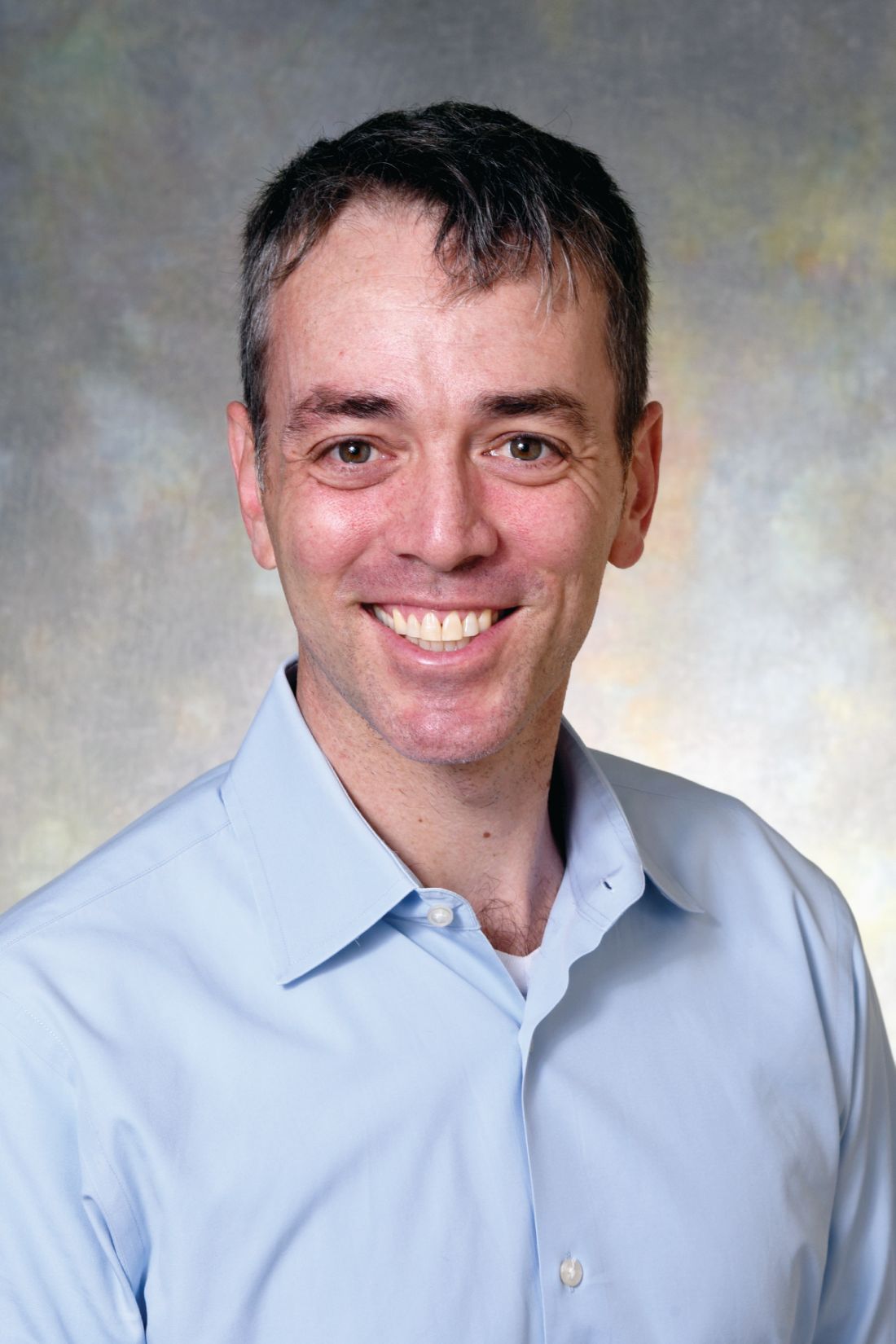User login
As the legalization of medical cannabis becomes more widespread, more and more patients admitted to the hospital are taking it. But once a patient crosses the hospital threshold, how do you incorporate into your care a product that is still illegal at the federal level?
Charles Reznikoff, MD, a physician and addiction specialist who treats medically complex hospitalized patients, walked the audience through the complexities of use of medical cannabis in these patients in a session Tuesday here at HM19. Dr. Reznikoff, from the Hennepin County (Minn.) Medical Center (HCMC), in the Minneapolis area, also discussed medical cannabis indications and contraindications in hospitalized patients.
In 2014, Minnesota passed a law allowing the use of state-based medical cannabis program products in the hospital setting. Two hospitals in the state – HCMC and the Mayo Clinic, which began allowing its use at those centers 3 years ago – illustrate the divergent ways in which different centers manage and oversee the products’ use, as they are forced to navigate nuances particular to their settings.
At Mayo, the medical cannabis is centrally stored, maintained, and administered by hospital nurses, physicians, and pharmacists. At HCMC, the situation is very different.
“Our nursing union told us, ‘Don’t make us handle schedule I substances,’ ” Dr. Reznikoff said. In addition, the hospital’s security officers – who are often off-duty police officers – said that their only interaction with medical cannabis would be to destroy it because of its illegal federal status.
So, at HCMC, the hospital documents which patients have medical cannabis, and the patients let nurses know when they take it and administer it themselves, with that administration documented. Only edibles and tinctures are allowed for use in the hospital – vaping is prohibited.
Despite the departure from the normal use of the hospital’s own formulary and pharmacy, the procedures have worked out, he said.
“For HCMC, it has been pretty straightforward – patients are happy and it has been a piece of cake,” he said, adding that in a few instances patients have been unaware that they could use their medical cannabis, or staff has been confused about the protocol.
Physicians in these situations should be on the lookout for contraindications and potential side effects, Dr. Reznikoff said.
“Medical cannabis has not a ton, but some, important side effects worth knowing about,” he said. “It can cause falls, it can cause dizziness. It can cause a little bit of tachycardia ... If they stop it, people can have mild withdrawal.”
Contraindications include altered mental status such as delirium, having had falls or having a risk of falling, hypotension or hypovolemia, and psychosis.
“For our patients, it is mostly HIV/AIDS and cancer patients who have contraindications, and that comes in the form of infectious diseases and their complications,” he said in an interview.
In the realm of palliative care, cancer, AIDS, and end-of-life care, the use of medical cannabis is a potential tool and should hinge on what patients report back as helpful or not helpful, he said.
But some claims being made about cannabidiol oil, whether as immunotherapy for autoimmune diseases, as an antipsychotic for schizophrenia, or as a cure for heroin addiction, for example, stretch credibility, Dr. Reznikoff said. But the evidence in favor of its use for seizure-reduction, for example, is persuasive, he added.
Overall, medical cannabis for hospitalized patients is no simple matter, but it is worth the fuss for some patients, he said.
“There are a few niches for it – and I think they are niches, but they’re there,” he said. “I don’t love medical cannabis. I think there are a lot of issues with it. I think a lot of physicians are very frustrated with it. But I think also, when we’re talking about palliative care–type issues and seizure disorders not otherwise treated by conventional means ... it’s very reasonable to bring cannabis into the hospital.”
As the legalization of medical cannabis becomes more widespread, more and more patients admitted to the hospital are taking it. But once a patient crosses the hospital threshold, how do you incorporate into your care a product that is still illegal at the federal level?
Charles Reznikoff, MD, a physician and addiction specialist who treats medically complex hospitalized patients, walked the audience through the complexities of use of medical cannabis in these patients in a session Tuesday here at HM19. Dr. Reznikoff, from the Hennepin County (Minn.) Medical Center (HCMC), in the Minneapolis area, also discussed medical cannabis indications and contraindications in hospitalized patients.
In 2014, Minnesota passed a law allowing the use of state-based medical cannabis program products in the hospital setting. Two hospitals in the state – HCMC and the Mayo Clinic, which began allowing its use at those centers 3 years ago – illustrate the divergent ways in which different centers manage and oversee the products’ use, as they are forced to navigate nuances particular to their settings.
At Mayo, the medical cannabis is centrally stored, maintained, and administered by hospital nurses, physicians, and pharmacists. At HCMC, the situation is very different.
“Our nursing union told us, ‘Don’t make us handle schedule I substances,’ ” Dr. Reznikoff said. In addition, the hospital’s security officers – who are often off-duty police officers – said that their only interaction with medical cannabis would be to destroy it because of its illegal federal status.
So, at HCMC, the hospital documents which patients have medical cannabis, and the patients let nurses know when they take it and administer it themselves, with that administration documented. Only edibles and tinctures are allowed for use in the hospital – vaping is prohibited.
Despite the departure from the normal use of the hospital’s own formulary and pharmacy, the procedures have worked out, he said.
“For HCMC, it has been pretty straightforward – patients are happy and it has been a piece of cake,” he said, adding that in a few instances patients have been unaware that they could use their medical cannabis, or staff has been confused about the protocol.
Physicians in these situations should be on the lookout for contraindications and potential side effects, Dr. Reznikoff said.
“Medical cannabis has not a ton, but some, important side effects worth knowing about,” he said. “It can cause falls, it can cause dizziness. It can cause a little bit of tachycardia ... If they stop it, people can have mild withdrawal.”
Contraindications include altered mental status such as delirium, having had falls or having a risk of falling, hypotension or hypovolemia, and psychosis.
“For our patients, it is mostly HIV/AIDS and cancer patients who have contraindications, and that comes in the form of infectious diseases and their complications,” he said in an interview.
In the realm of palliative care, cancer, AIDS, and end-of-life care, the use of medical cannabis is a potential tool and should hinge on what patients report back as helpful or not helpful, he said.
But some claims being made about cannabidiol oil, whether as immunotherapy for autoimmune diseases, as an antipsychotic for schizophrenia, or as a cure for heroin addiction, for example, stretch credibility, Dr. Reznikoff said. But the evidence in favor of its use for seizure-reduction, for example, is persuasive, he added.
Overall, medical cannabis for hospitalized patients is no simple matter, but it is worth the fuss for some patients, he said.
“There are a few niches for it – and I think they are niches, but they’re there,” he said. “I don’t love medical cannabis. I think there are a lot of issues with it. I think a lot of physicians are very frustrated with it. But I think also, when we’re talking about palliative care–type issues and seizure disorders not otherwise treated by conventional means ... it’s very reasonable to bring cannabis into the hospital.”
As the legalization of medical cannabis becomes more widespread, more and more patients admitted to the hospital are taking it. But once a patient crosses the hospital threshold, how do you incorporate into your care a product that is still illegal at the federal level?
Charles Reznikoff, MD, a physician and addiction specialist who treats medically complex hospitalized patients, walked the audience through the complexities of use of medical cannabis in these patients in a session Tuesday here at HM19. Dr. Reznikoff, from the Hennepin County (Minn.) Medical Center (HCMC), in the Minneapolis area, also discussed medical cannabis indications and contraindications in hospitalized patients.
In 2014, Minnesota passed a law allowing the use of state-based medical cannabis program products in the hospital setting. Two hospitals in the state – HCMC and the Mayo Clinic, which began allowing its use at those centers 3 years ago – illustrate the divergent ways in which different centers manage and oversee the products’ use, as they are forced to navigate nuances particular to their settings.
At Mayo, the medical cannabis is centrally stored, maintained, and administered by hospital nurses, physicians, and pharmacists. At HCMC, the situation is very different.
“Our nursing union told us, ‘Don’t make us handle schedule I substances,’ ” Dr. Reznikoff said. In addition, the hospital’s security officers – who are often off-duty police officers – said that their only interaction with medical cannabis would be to destroy it because of its illegal federal status.
So, at HCMC, the hospital documents which patients have medical cannabis, and the patients let nurses know when they take it and administer it themselves, with that administration documented. Only edibles and tinctures are allowed for use in the hospital – vaping is prohibited.
Despite the departure from the normal use of the hospital’s own formulary and pharmacy, the procedures have worked out, he said.
“For HCMC, it has been pretty straightforward – patients are happy and it has been a piece of cake,” he said, adding that in a few instances patients have been unaware that they could use their medical cannabis, or staff has been confused about the protocol.
Physicians in these situations should be on the lookout for contraindications and potential side effects, Dr. Reznikoff said.
“Medical cannabis has not a ton, but some, important side effects worth knowing about,” he said. “It can cause falls, it can cause dizziness. It can cause a little bit of tachycardia ... If they stop it, people can have mild withdrawal.”
Contraindications include altered mental status such as delirium, having had falls or having a risk of falling, hypotension or hypovolemia, and psychosis.
“For our patients, it is mostly HIV/AIDS and cancer patients who have contraindications, and that comes in the form of infectious diseases and their complications,” he said in an interview.
In the realm of palliative care, cancer, AIDS, and end-of-life care, the use of medical cannabis is a potential tool and should hinge on what patients report back as helpful or not helpful, he said.
But some claims being made about cannabidiol oil, whether as immunotherapy for autoimmune diseases, as an antipsychotic for schizophrenia, or as a cure for heroin addiction, for example, stretch credibility, Dr. Reznikoff said. But the evidence in favor of its use for seizure-reduction, for example, is persuasive, he added.
Overall, medical cannabis for hospitalized patients is no simple matter, but it is worth the fuss for some patients, he said.
“There are a few niches for it – and I think they are niches, but they’re there,” he said. “I don’t love medical cannabis. I think there are a lot of issues with it. I think a lot of physicians are very frustrated with it. But I think also, when we’re talking about palliative care–type issues and seizure disorders not otherwise treated by conventional means ... it’s very reasonable to bring cannabis into the hospital.”

